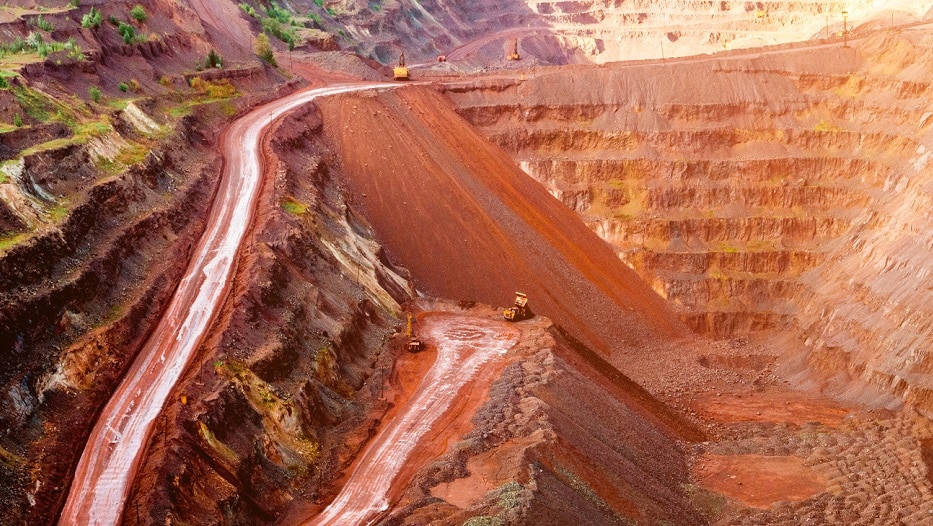Julia Maria Gomez de Avila Segade | 04/05/2023
Although the mining sector is perceived as traditional, the truth is that in recent years it has undergone a great transformation thanks to innovation and the strengthening of technologies that reduce mining’s negative impact on the environment and promote the efficient use of resources.
The mining industry has traditionally been criticized for its negative impact on the environment and communities located close to its operations. However, in recent years, it is becoming increasingly sustainable, reducing its environmental burden and improving worker conditions. To talk about this, we interviewed two experts from PwC Chile: Andrés Sanín, Director of Natural Resources, and Nicolás Westenenk, Manager of Sustainability and Climate Change.
Both explain the importance of technological development with the adoption of Artificial Intelligence (AI), automation and the use of renewable energy, as well as the implementation of more responsible practices in waste management such as the use of underground mining, which is increasingly popular, and the restoration of the landscape after mining, with reforestation and soil rehabilitation programs.
“Another approach is the use of innovative techniques for mineral extraction from waste such as bioleaching”
The importance of the circular economy
This production model is based on reducing waste and promoting the efficient use of natural resources and can be applied in various industries. Specifically, in the field of mining, being an extractive activity of raw materials, it significantly reduces negative impacts on the environment. In this way, materials used in construction can be reused to make areas usable again after mining — for example, by using the soil and rock extracted during the work to fill the excavated areas and level the ground at the conclusion of the project.
“Another approach is the use of innovative techniques for mineral extraction from waste such as bioleaching that uses microorganisms to separate valuable metals from waste. This allows the amount of waste that is sent to landfill sites to be reduced, helps preserve natural resources, and pollutes much less by not using toxic chemicals in extraction,” according to PwC.
72% of Chile’s surface area suffers from drought to some degree and this damage replicates in many other territories on the planet
In addition to this technique, the specialist highlights how other companies are using renewable energy sources, such as solar or wind, to power their operations, as well as the addition of more sustainable waste management practices. These also include reusing material and water recycling, an essential aspect of this transition as 72% of Chile’s surface area suffers from drought to some degree and this damage replicates in many other territories on the planet.
Our experts refer to Richard Herrington’s ‘Mining our Green Future’ article (published in Nature magazine in 2021). It explains the relationship between mining and green energy, setting out as an example that for battery production, the extraction of raw materials, such as lithium, is required. Therefore, as the transition to renewable sources accelerates, demand for minerals increases significantly, making it all the more urgent to implement a circular economy in this field.
The case of Chilean mining
In Chile, the mining industry is a vital part of the economy, representing 10% of the country’s GDP and more than 50% of its exports, especially copper. In recent years, the Government has implemented regulations to promote sustainability such as the ‘Mine Works and Facilities Closure Act and the National Mining Policy,’ which seeks carbon neutrality by 2040. For their part, companies have focused on reducing pollution, better using available resources, and not wasting water.
There are also long-term challenges, such as the restoration of the land where they have operated and the future situation of mine tailings
The PwC experts share some of the country’s most relevant initiatives in recent years: Codelco’s carbon neutral by 2050 plan, where one of those actions is to achieve 100% electromobility in underground mines; BHP Chile’s Spence mining green hydrogen pilot project, that seeks to replace diesel and natural gas with green hydrogen; and ‘Antofagasta Minerals’ Los Pelambres, where it has already switched from fossil fuels to 100% renewable energy for electricity supply.
They also point out the main challenges mining faces in becoming more sustainable, such as accessibility to technologies, increased costs associated with these types of practices, and the need to engage all stakeholders in processes. There are also long-term challenges, such as the restoration of the land where they have operated and the future situation of mine tailings, residues that remain after the minerals are processed and that pose a great environmental risk.
“In summary, sustainable mining in Chile is being developed through government policies and regulations, as well as sustainable initiatives and practices implemented by companies. The main focus is on energy efficiency, greenhouse gas emissions reduction and water management,” they conclude.
Article collaborators:

Nicolás Westenenk is the Sustainability and Climate Change Manager for PwC Chile .
He has more than 15 years of experience in energy and climate change, where he has led important projects to support the preparation of public policy including the Climate Change Act, the Energy Efficiency Act or the Extended Responsibility Act of the Producer.

Andrés Sanín is Director of Natural Resources and Digital Excellence at PwC Chile .
He has more than 17 years of experience, specializing in delivering solutions to improve organizational and digital transformation. In addition, it is dedicated to managing major portfolios, programs, and projects for a wide variety of different industries.
Keep reading… Vulnerability of coasts to climate change





